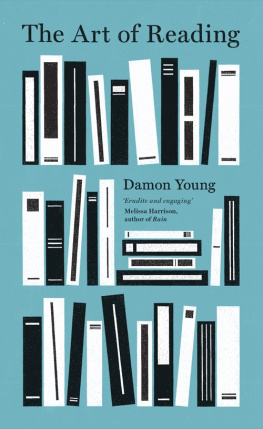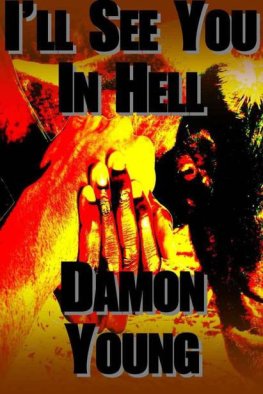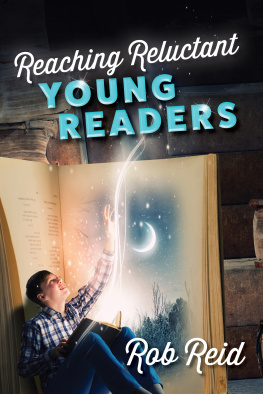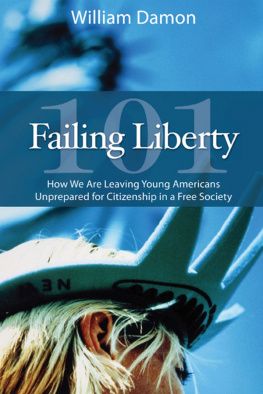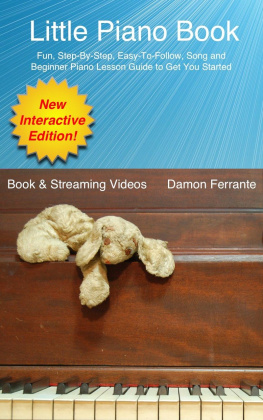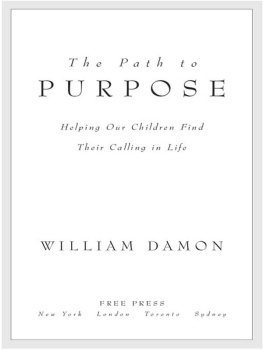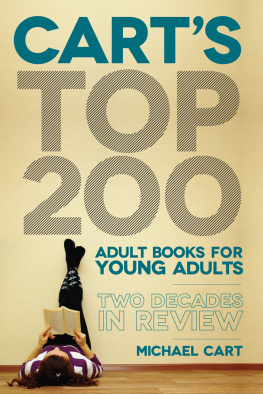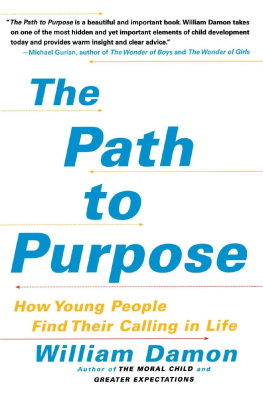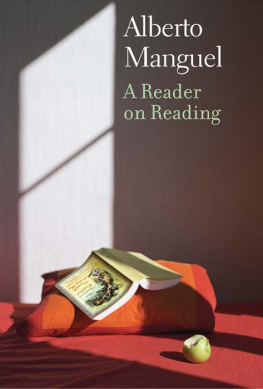
THE ART OF READING
Damon Young is a prize-winning philosopher and writer. He is the author of seven books, including How to Think About Exercise , Philosophy in the Garden , and Distraction . His works are published internationally in English and translation, and he has also written poetry and short fiction. Young is an Honorary Fellow at the University of Melbourne.
Scribe Publications
1820 Edward St, Brunswick, Victoria 3056, Australia
2 John St, Clerkenwell, London, WC1N 2ES, United Kingdom
Published in the UK by Scribe 2017
Originally published in Australia by Melbourne University Press 2016
Text Damon Young, 2016
All rights reserved. Without limiting the rights under copyright reserved above, no part of this publication may be reproduced, stored in or introduced into a retrieval system, or transmitted, in any form or by any means (electronic, mechanical, photocopying, recording or otherwise) without the prior written permission of the publishers of this book.
Learning to Read reproduced by permission of D Nurkse, from The Paris Review #213, The Paris Review Foundation, New York, 2015, D Nurkse; The Bookcase reproduced by permission of the publishers, from Electric Light by Seamus Heaney, Faber & Faber, London, 2001, Seamus Heaney; The Thought Fox reproduced by permission of the publishers, from Selected Poems 19571981 by Ted Hughes, Faber & Faber, London, 1982, Ted Hughes; Random Ageist Verses reproduced by permission of the publishers, from Chorale at the Crossing by Peter Porter , Picador, London, Peter Porter, 2015; Moon Poem reproduced by permission of JH Prynne, from Poems by JH Prynne , Fremantle Arts Centre Press, Fremantle, WA, 2005, JH Prynne; The Love Song of J Alfred Prufrock reproduced by permission of the publishers, from Collected Poems: 19091962 by TS Eliot , Faber & Faber, London, 1963, TS Eliot. Chapter opener illustrations Shutterstock: majivecka; Maria Bell (Temperance); Nowik Sylwia (The Lumber Room).
9781911344186 (UK edition)
9781925548099 (e-book)
scribepublications.com.au
scribepublications.co.uk
CONTENTS
The Infinite Library
Boredom at Buckingham Palace
The Ninja of Unfinishedness
Gospel Untruths
Appetite for Distraction
No I Said No I Wont No
For my parents, who began it all by reading to me.
And then by not reading to me.
A book is a thing among things, a volume lost among the volumes that populate the indifferent universe, until it meets its reader, the person destined for its symbols.
Jorge Luis Borges, prologue to A Personal Library
One does not write for slaves.
Jean-Paul Sartre, Why Write?
LIBERATING PAGES

T o my right is a small stained pine bookcase. It contains, among other things, my childhood.
Stacked in muted burgundy and khaki buckram are classics like Aesops Fables , full of blunt aphorisms for 4-year-olds: To be well prepared for war is the best guarantee of peace. Not far away is Richard Burtons translation of The Book of the Thousand and One Nights , with its formally phrased smut (he laid his hand under her left armpit, whereupon his vitals and her vitals yearned for coition). Still read after seven decades, my mothers octavo The Magic Faraway Tree mystery, adventure and casual corporal punishment. I also have her Winnie the Pooh , printed the year she was born. Seventy years on, her grandson now has Eeyore days. (Good morning, Pooh Bear If it is a good morning Which I doubt.) But most important for me, standing face out in black plastic leather and fake gold leaf, is The Celebrated Cases of Sherlock Holmes .
Holmes was my first literary world. Proudly bigger than anything read by my primary school peers, Conan Doyles 800-page tome was a prop in my performance of superiority. This archaic lump of text helped me feel special. I was more clever, said the serious serif font, than the other 11-year-olds; more intellectually brave, said the ornamental binding, than my teachers.
Sherlock Holmes was a kind of existential dress-upan adult I tried on for size. I made our common traits a uniform: social abruptness, emotional flight, pathological curiosity. In Conan Doyles prose, this make-believe was more stylish than my clumsy boyhood persona. Take the first lines from The Sign of the Four : Sherlock Holmes took his bottle from the corner of the mantel-piece and his hypodermic syringe from its neat morocco case. My detective was an addict: but with panache. (I kept a dictionary for words like morocco. And panache.)
Yet there was more to The Celebrated Cases of Sherlock Holmes than my pretence. What I finally took from Conan Doyles mysteries was not savoir faire but freedom: the charisma of an independent mind. This Victorian London, with its shadows and blood, was mine . I winced as Holmes thrust the sharp point home, pressed down the tiny piston, but the needle and its rush were my own to invent. Watsons gentlemanly heroism, and Inspector Lestrades mediocrity: all belonging to the little boy lying quietly on the flokati rug. So my Holmesian education was only partly about general knowledgethe symbolic pips of the Ku Klux Klan, the atmosphere of moors, the principles of deduction. It was also, more crucially, schooling in the exertion of my own psyche. I willed this strange world into being, with help from Conan Doyle. The author was less like an entertaining uncle, and more like a conspirator. We met in private to secure my liberation from schools banality and homes atmosphere of violence.
Holmes was not my first book. I was already in that promised land, as Vladimir Nabokov put it in Speak, Memory , where words are meant to mean what they mean. I learned to read with the Asterix adventures, when my parents refused to voice the speech boxes. If I wanted the puns and fisticuffs, I had to parse the text myself. Beside my bed there was also a lion who swallowed vegetable soup instead of rabbits; dinosaurs against industrial pollution; and Ferdinand the pacifist bull. These were training and, later, distraction. Like Germaine Greer, who read for greed, I kept myself busy with words on paperan urge closer to rapacity than curiosity. These desires combined in Garfield, as I devoured cartoons and lasagne with equal urgency.
But with The Celebrated Cases of Sherlock Holmes , I had a new sense of greater mastery, and pleasure in this discovery. Part of me saw Holmes as a legendary historical hero, and I enjoyed what novelist Michael Chabon called the happy confusion of fact and fiction. Another part of me, burgeoning and a little buzzed, was doing away with deference. I realised that these dark marks on paper were mine to ignore or investigate, enrich or evade. It was with the junky detective that I first became aware of myself as something powerful: a reader.
SORCERY
Three decades later, my bookshelves are punctuated by discoveries of this imaginative independence. For these authors, the written word encouraged a new liberty: to think, perceive or feel with greater awareness.
Novelist William Gibson, whom I read as a teenager, is currently shelved in the garage between Ian Flemings pubescent thrillers and Harry Harrisons galactic satire. Also roused by Sherlock Holmes as a boy, Gibson transformed his drab suburban neighbourhood into Victorian England, one brick wall at a time. I could imagine that there was an infinite number of similar buildings in every direction, Gibson told The Paris Review , and I was in Sherlock Holmess London. Conan Doyles stories were more than escapism or amusement for Gibson. They beckoned him to invent.
Next page
